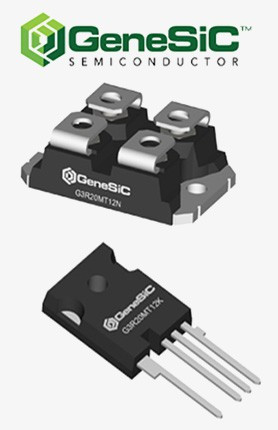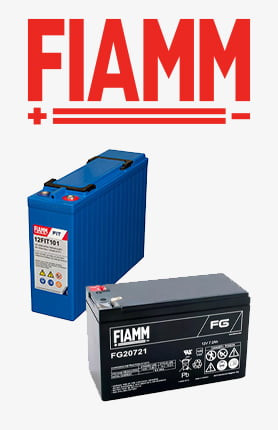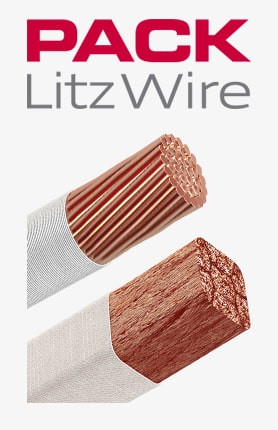Sie müssen eingeloggt sein
-
WróćX
-
Komponenten
-
-
Category
-
Halbleiter
- Dioden
- Thyristoren
- Elektroisolierte Module
- Brückengleichrichter
-
Transistoren
- Transistoren | GeneSiC
- SiC-MOSFET-Module | Mitsubishi
- SiC-MOSFET-Module | STARPOWER
- ABB SiC-MOSFET-Module
- IGBT-Module | MITSUBISHI
- Transistormodule | MITSUBISHI
- MOSFET-Module von MITSUBISHI
- Transistormodule | ABB
- IGBT-Module | POWEREX
- IGBT-Module | INFINEON (EUPEC)
- Halbleiterkomponente aus Siziliumkarbid
- Przejdź do podkategorii
- Treiber
- Leistungsblöcke
- Przejdź do podkategorii
- Strom- und Spannungswandler von LEM
-
Passive Elemente (Kondensatoren, Widerstände, Sicherungen, Filter)
- Widerstände
-
Sicherungen
- Miniatursicherungen für elektronische Schaltungen der Serien ABC und AGC
- Schnelle Röhrensicherungen
- Zeitverzögerungssicherungen mit GL / GG- und AM-Eigenschaften
- Ultraschnelle Sicherungseinsätze
- Britische und amerikanische schnelle Sicherungen
- Schnelle europäische Sicherungen
- Traktionssicherungen
- Hochspannungs-Sicherungseinsätze
- Przejdź do podkategorii
-
Kondensatoren
- Kondensatoren für Motoren
- Elektrolytkondensator
- Island Filmkondensatoren
- Leistungskondensatoren
- Kondensatoren für Gleichstromkreise
- Kondensatoren zur Leistungskompensation
- Hochspannungskondensatoren
- Induktionsheizkondensatoren
- Impulskondensatoren
- DC LINK-Kondensatoren
- Kondensatoren für AC / DC-Schaltungen
- Przejdź do podkategorii
- Entstörungsfilter
- Superkondensatoren
- Überspannungsschutz
- TEMPEST-Strahlungserkennungsfilter
- Przejdź do podkategorii
-
Relais und Schütze
- Theorie der Relais und Schütze
- Dreiphasen-Halbleiterrelais AC
- Halbleiterrelais DC
- Regler, Steuerungen und Zubehör
- Sanftstarter und Schaltschütze
- Elektromechanische Relais
- Schütze
- Drehschalter
-
Einphasen-Halbleiterrelais AC
- Einphasen-Wechselstrom-Halbleiterrelais, Serie 1 | D2425 | D2450
- Einphasige AC-Halbleiterrelais der Serien CWA und CWD
- Einphasen-Wechselstrom-Halbleiterrelais der Serien CMRA und CMRD
- Einphasen-Wechselstrom-Halbleiterrelais, PS-Serie
- Doppel- und Vierfach-Wechselstrom-Halbleiterrelais, Serie D24 D, TD24 Q, H12D48 D.
- 1-phasige Festkörperrelais, gn-Serie
- Einphasige Wechselstrom-Halbleiterrelais, Serie ckr
- Einphasen-Wechselstromrelais der ERDA- UND ERAA-SERIE für die DIN-Schiene
- Einphasige Wechselstromrelais für 150A Strom
- Doppelte Halbleiterrelais mit integriertem Kühlkörper für eine DIN-Schiene
- Przejdź do podkategorii
- Einphasen-Halbleiterrelais AC für Leiterplatten
- Interface-Relais
- Przejdź do podkategorii
- Induktive Komponente
- Radiatoren, Varistoren, Thermoschütze
- Ventilatoren
- Klimaanlagen, Ausrüstung für Schaltschränke, Industriekühler
-
Batterien, Ladegeräte, Pufferstromversorgungen und Wechselrichter
- Batterien, Ladegeräte - theoretische Beschreibung
- Lithium-Ionen-Batterien. Kundenspezifische Batterien. Batteriemanagementsystem (BMS)
- Batterien
- Ladegeräte und Zubehör
- USV-Notstromversorgung und Pufferstromversorgung
- Konverter und Zubehör für die Photovoltaik
- Energiespeicher
- Brennstoffzellen
- Lithium-Ionen-Batterien
- Przejdź do podkategorii
-
Automation
- Spiralift Hebebühnen
- Futaba Drohnenteile
- Grenzschalter, Microschalter
- Sensoren, Wandler
-
Pyrometer
- Infrarot-Temperatursensor, kabellos, wasserdicht, IR-TE-Serie
- Infrarot-Temperatursensor, kabellos, IR-TA-Serie
- Infrarot-Temperatursensor, kabellos, IR-H-Serie
- Ein schnelles stationäres Pyrometer in einem sehr kleinen IR-BA-Gehäuse
- Lichtleiter-Temperatursensoren, IR-FA-Serie
- Das stationäre Pyrometer der IR-BZ-Serie
- Przejdź do podkategorii
- Zähler, Zeitrelais, Einbaumessgeräte
- Industrielle Schutzausrüstung
- Licht- und Signalentechnik
- Infrarot-Kamera
- LED-Anzeigen
- Taster, Schalter und Zubehör
- Przejdź do podkategorii
-
Adern, Litzen, Schutzhüllen, Flexible Verbingungen
- Drähte
- Kabeleinführungen und Kupplungen
- Litzen
- Kabel für spezielle Anwendungen
- Schläuche
-
Geflochtene Kabel
- Zöpfe flach
- Zöpfen Runde
- Sehr flexible Geflecht - flach
- Sehr flexible Geflecht - Rund
- Kupfergeflecht zylindrischen
- Kupfergeflechtschirm und zylindrischer
- Flexible Massebänder
- Geflechte zylindrischen verzinkt und Edelstahl
- PVC-isolierte Kupferlitzen - Temperatur 85 ° C
- Flach geflochtene Aluminium
- Connection Kit - Zöpfe und Röhren
- Przejdź do podkategorii
- Leitungen und Sonstiges für Traktion
- Crimpverbinder
- Flexible isolierte Kupferschienen
- Mehrschichte flexible Kupferschienen
- Kabelrohre, Kabelkanäle und Kabelführung
- Przejdź do podkategorii
- Zobacz wszystkie kategorie
-
Halbleiter
-
-
- Lieferanten
-
Applications
- AC- und DC-Antriebe (Wechselrichter)
- Ausrüstung für Verteilungs-, Steuerungs- und Telekommunikationsschränke
- Bergbau, Metallurgie und Gründung
- CNC-Werkzeugmaschinen
- Energy bank
- HLK-Automatisierung
- Induktionsheizung
- Industrielle Automatisierung
- Industrielle Automatisierung
- Industrielle Schutzvorrichtungen
- Komponenten für explosionsgefährdete Bereiche (EX)
- Maschinen zum Tiefziehen von Kunststoffen
- Maschinen zum Trocknen und Verarbeiten von Holz
- Motoren und Transformatoren
- Schweißmaschinen und Schweißmaschinen
- Straßenbahn- und Bahntraktion
- Temperaturmessung und -regelung
- Temperaturmessung und -regelung
- USV- und Gleichrichtersysteme
-
Installation
-
-
Inductors
-
-
Induktionsgeräte
-
-
Service
-
- Kontakt
- Zobacz wszystkie kategorie
Why Invest in Industrial Control Cabinet Air Conditioning? ROI and Extended Component Lifespan

Introduction
In industrial conditions, the reliability of automation systems depends not only on the quality of the components used but also on the environment in which they operate. One of the key factors influencing their durability and stability is the temperature inside control cabinets. Even slight exceedances of acceptable values can lead to unexpected downtime, costly failures, or shortened equipment lifespan.
Why Do Components Need Cooling?
Electronic devices such as inverters, PLCs, power supplies, or communication modules generate heat during normal operation. In the confined space of a control cabinet, this heat accumulates, and if not effectively dissipated, the internal temperature can quickly exceed the permissible limits set by equipment manufacturers.
Here’s what can happen when the cabinet temperature exceeds safe levels:
- Shortened lifespan of electronic components,
- Lower operational reliability – increased susceptibility to system errors and device reboots,
- Increased risk of failures and thermal damage,
- Production downtime costs due to necessary repairs or equipment replacements.
In many cases, passive cooling systems (e.g., natural ventilation) are insufficient, especially in applications operating at elevated ambient temperatures, with high component density, or in dusty environments.
That’s why active cooling systems, such as industrial air conditioners, not only increase installation reliability but also directly reduce operational costs.
ROI – Is Air Conditioning Really Worth It?
Investing in industrial air conditioning for control cabinets may seem expensive at first, but in many cases, it pays off faster than expected. Let’s analyze it through the lens of Return on Investment (ROI).
1. Extended Component Lifespan
Industrial electronics are typically designed to operate at temperatures up to 40–45°C. Exceeding this threshold leads to:
- Degradation of electrolytic capacitors,
- Shortened lifespan of power supplies and inverters,
- Decreased reliability of PLCs.
➡ It’s estimated that every +10°C above nominal temperature shortens device lifespan by 50%. This means that investing in cooling can double the lifecycle of many components.
2. Reduction of Unplanned Downtime
A control cabinet failure can stop the entire production line, and every minute of downtime costs:
- From several to tens of thousands of PLN per hour (depending on the industry),
- Additional hours of maintenance team work,
- Potential material losses and production delays.
➡ Air conditioning prevents overheating and thermal faults – reducing downtime risk.
3. Lower Maintenance Costs
Maintaining the proper temperature extends mean time between failures (MTBF), which means:
- Less frequent part replacements,
- Fewer service interventions,
- Reduced spare parts inventory and logistics costs.
4. Predictability and Monitoring
Modern industrial air conditioners (e.g., nVent SpectraCool) offer:
- Remote monitoring via Modbus/RS485,
- Temperature overrun alarms,
- Temperature trend analysis.
➡ This enables predictive maintenance and planned servicing without surprises.
Conclusion: The cost of purchasing and installing an air conditioner often pays off within 1–2 years, thanks to reduced failures and associated costs.
What to Consider When Choosing a Control Cabinet Air Conditioner?
1. Cooling Capacity (W, BTU/h)
Select the air conditioner based on the calculated thermal load. For example:
- Cabinet in a production hall: approx. 500–1000 W,
- Cabinet in an outdoor container: often over 1000 W.
It’s recommended to add a 15–20% power margin for variable factors such as rising ambient temperature or future component additions.
2. Environmental Conditions
Consider the environment in which the cabinet operates:
- Dust, dirt, oil mist → choose an air conditioner with IP54–IP66,
- High ambient temperatures → required operation range up to 55°C or more,
- Outdoor installations → models resistant to weather, preferably INOX or with anti-corrosion coating.
3. Mounting Type
Different mounting variants are available:
- Side-mounted – most popular, easy to service,
- Roof-mounted – saves side cabinet space,
- Internal door-mounted – if the cabinet is placed close to other equipment.
4. Communication and Integration
Modern air conditioners offer integration with SCADA/BMS systems:
- RS485, Modbus, Ethernet interfaces,
- Temperature alarms, compressor control,
- Remote management and diagnostics capabilities.
5. Manufacturer and Service
Choose devices from reputable manufacturers (e.g., nVent), who offer:
- Long-term support,
- Availability of spare parts,
- Selection tools and online calculators.
Summary
Investing in industrial control cabinet air conditioning is not just a cost – it's a way to ensure the continuity of automation and energy systems. Maintaining stable internal cabinet temperature:
- Extends the lifespan of electronic components,
- Minimizes the risk of failures and downtimes,
- Increases the reliability of control systems,
- Reduces service and equipment replacement costs.
With a properly selected cooling system, a high ROI (Return on Investment) is achievable – often within 1–2 years in environments with high dust levels or elevated temperatures.
Modern air conditioners also offer remote monitoring features, SCADA/BMS integration, and IP54–IP66 protection, making them an ideal solution for demanding industrial applications.
Ähnliches Produkt
Ähnliche Beiträge
 Thermally conductive materials in power storages
Thermally conductive materials in power storages
 Measuring power and energy in electric circuits
Measuring power and energy in electric circuits
 Industrial communication in explosion hazardous areas (with MTL components)
Industrial communication in explosion hazardous areas (with MTL components)





Hinterlassen Sie einen Kommentar